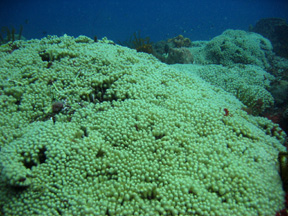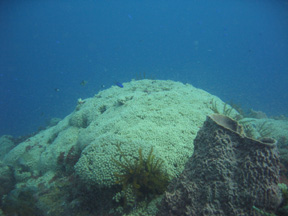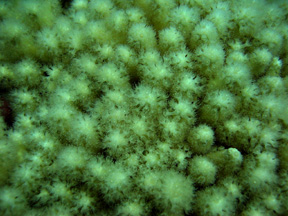|
Oligospecific Coral Assemblages |
|
Although dominated by M. mirabilis, Porites porites is another common branching species interspersed in these ologi-specific aggregations. The largest and most impressive ones run perpendicular to the shoreline near Mero where individual ridges reach dimensions of up to 1000 m2. The local dive site where these reefs are found is called Maggie's Point. Smaller formations are found throughout the west coast where reef accretion has take place. At Cachacrou (Scott's Head) only a few remnants of large formations of this kind are alive, due to the heavy use of this reef. In 2007 our survey team also identified small patches of up to approx. 25m2 in the southern region of Dominica near Fond Saint Jean. The 2005 bleaching episode severely affected the abundance of P. porites, which in 2006 had virtually disappeared from many sites. This was also very evident in the M. mirabilis assemblages, previously containing substantial amounts of P. porites. SCCS1107 |
    M.mirabilis assemblages |
| CLICK HERE FOR DISTRIBUTION MAP |
INDEX | INTRODUCTION |REGIONS | HABITATS | SPECIES | STATUS | CONTRIBUTORS | REPORTS
Institute
for Tropical Marine Ecology ITME Inc., P.O. Box
36, Roseau, Commonwealth of Dominica.
ITME
is a not-for-profit institution for environmental education and research.